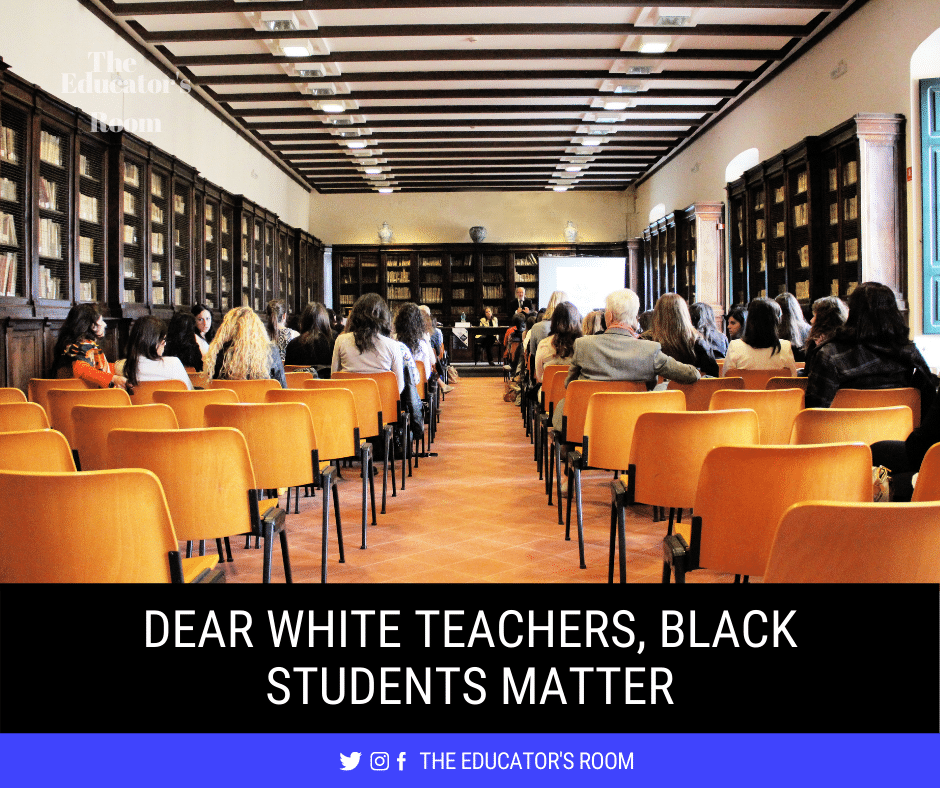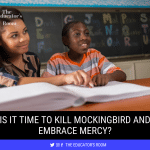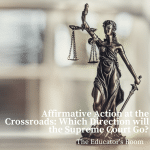Dear White Teachers, Black Students Matter
After George Floyd’s murder, I woke up to a string of messages from one of my Black students, M. She poured her heart out to me at three in the morning, releasing the burdens she carries as a young Black woman in America.
She said she was desperate to talk to someone and she reached out because “you always find ways to make things less stressful for a couple of seconds. I know you care.”
These words gutted me completely.
A teacher’s job is to make things better for our students, for even a few seconds. Though, at times like these, the task seems both impossible and inadequate.
When she wrote to me, we’d been quarantined for over two months. Even the most reluctant students were missing the stable connections school provides. COVID highlighted the inequities for our students furthest from justice, and the “racial pandemic,” only broadened that chasm.
Or at least, the collective white understanding of the chasm that has always existed.
When the looting began, and the occupant of the white house bafflingly called for shooting, someone M thought was her friend called her a terrorist online. M was nowhere near any protests, because her mom, a Black woman with years of experience fighting injustice with her very presence, knew the dangers the crowds posed for her daughter. M was safely at home, but still, her “friend” said she was terrorizing America.
For what? Simply existing?
Double standards
M is 16, trying to find her voice and live her truth. This is an uncomfortable process for every teenager, but she also has to fight for her right to take up space as a young Black woman. She has to answer for her race when the white boy hurling insults will never have to do the same.
M showed her forced maturity when she recognized the hypocrisy of this moment. It’s clear that black people are demonized for protesting, while “white people are allowed to storm up to their capitol building with heavy weapons to attack law enforcement just because they don’t want to stay inside…they call that a protest.”
White people are never asked to explain, support, or refute their whiteness. They are simply allowed to be white. The media doesn’t equate me, a young white woman, with the outraged, confederate flag waving man on the steps of the state capitol.
It would be easy for me to remove myself, rest on those distinctions, and continue to teach as an educator who loves and cares for all my students.
But, white teachers need to do more. We don’t all have to be activists on the streets, but as a teacher, it’s delusional to think we aren’t on the front lines of justice. M proved that to me.
We can’t hide behind our well-intentioned kindness and shut out reality. We need to answer for our race and examine our whiteness because it’s omnipresent and powerful. Because in the classroom, our students reckon with their own identities, as well as ours.
This summer was been unsettling, disturbing, frustrating, heartbreaking, and infuriating. But for M, and those like her, this violence has been generations, not a few months of headlines. As a white woman, I have the privilege to rage at the news, but I am still safe, cared for, and heard in my own life.
Meanwhile, M, the budding poet, was trying “to breath without breathing in the toxic air that I have to share with people who refuse to care.”
Kindness isn’t enough
White educators are conditioned to say we work hard, we love education, and we love our students. But, we’re rarely asked to look back on how we got to where we are, why we hold onto traditional educational values and curriculum built for a different time, and if we are really seeing our students for who they are, even, as especially when, they challenge our worldviews.
[bctt tweet=” This lack of both personal and systemic examination is precisely why white privilege, at the expense of people of color, exists and perpetuates. Our silence perpetuates violence. ” username=””]
My job is not just to teach English, though examining what I teach, how I teach it, and why is critical to antiracist work. This work also means self-reflecting, uncovering my own biases, and learning accurate history, and developing an understanding of systemic racism. To really see and impact students like M and the white student who called her a terrorist, I need to make my classroom antiracist. Period.
Fighting for change when others choose to close their eyes feels woefully ineffective. But, no matter how ill-equipped I might feel for tough classroom conversations, they aren’t optional. I’m preparing the best I can.
I am reading, listening, and engaging with Black voices like Ibram X Kendi, Layla Saad, and Ijeoma Olou. I am diving deep into a personal reflection journey and calling out white fragility in staff meetings. I am challenging my department to reexamine the texts we teach, why, and how we teach them. This year, my students will read Nic Stone’s Dear Martin to dive headfirst into difficult conversations about police brutality that mirror our current reality.
I don’t have answers for hateful rhetoric, except actively countering with love, truth, and empathy. I can give my students tools to digest media with a critical eye. I can show them how to dig deep into their own beliefs and recognize how their privilege affects others. It is my obligation to show them their words have impact, power, and history, regardless of their intent.
I may not have answers, but I am going to continue learning, leading, and trying, because all my students deserve that.
Students like M don’t have a choice in engaging in what’s painful, powerful, and necessary, so we shouldn’t either.






